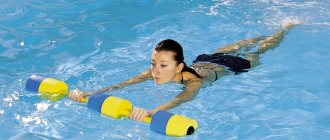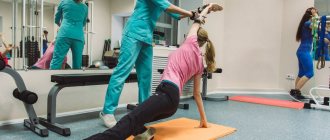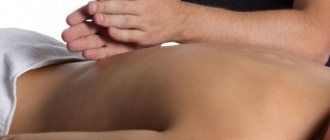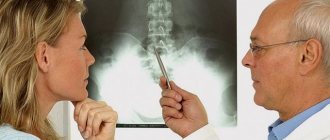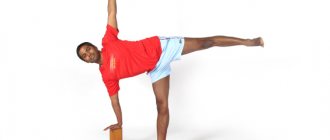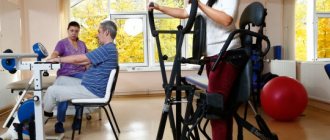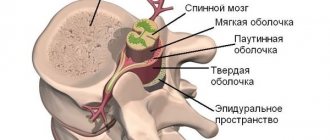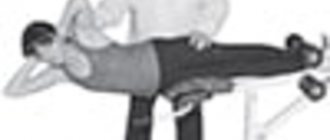Scoliosis is a fairly common disease of the spine. Many people are vulnerable to this disease, regardless of age. Scoliosis is a fairly serious disorder of the functioning of the musculoskeletal system. Severe curvature of the spine is fraught with subsequent problems in the functioning of many internal organs.
To prevent and treat scoliosis, it is very important to choose the right orthopedic mattress. It must meet a number of different requirements, which will be discussed below.
Which mattress to choose for scoliosis?
Scoliosis, a curvature of the spine, is not something to joke about.
To stop the development of the disease and correct the situation, measures must be taken immediately! It is important to pay special attention to the sleeping area. If the problem already exists, you need to focus on hard models; for prevention, a medium-hard mattress is suitable. The question of which mattress you need for scoliosis is best answered by a doctor, because each case is individual. Scoliosis is a curvature of the back with a displacement of the spine to the right or left.
It also appears when a rib or shoulder blade protrudes. This is a very common disease, affecting about 40% of people!
What to choose?
The most optimal would be to purchase a product with different hardness of the sides. For example, on one side there will be coconut coir, on the other there will be coconut coir with a layer of latex.
People's rating
If you are in doubt about choosing the type of spring block or materials, we advise you to study the popular rating of mattresses based on reviews. The Matraster online store has developed a unique system that allows, based on user reviews, to display ratings of bases, materials, and manufacturers on a five-point scale.
For example, mattresses using natural latex have the best ratings - 4.9 out of 5 . Coconut coir without additives - 4.4 out of 5 . It should also be noted that the springless block has a rating of 4.5 out of 5 , which is higher than the classic independent spring block, but significantly lower than the Micropackage springs.
Despite the ongoing controversy, many experts recommend springless options for people suffering from scoliosis and other spinal diseases. They are moderately elastic, provide a normal, rigid base for sleep and promote gradual alignment of the spine. But in any case, you should never self-medicate and for advice on choosing a mattress, you should first consult an orthopedic doctor.
What are the risks of scoliosis?
- Light form. It is expressed as a defect in appearance, however, since it is noticeable to others, the patient experiences severe psychological discomfort. The person simply closes down and constantly feels insecure and inferior. In addition, he is limited in some movements.
- Severe scoliosis. It is very dangerous because it shortens and deforms the torso, which reduces the volume of the chest and abdominal cavity. In such a body, internal organs are not able to function normally. For this reason, a person may eventually become disabled!
It is worth worrying and taking immediate action already at a mild stage of scoliosis, since, according to statistics, in a third of patients it continues to develop at a rapid rate.
A properly selected orthopedic mattress will help correct the situation, because scoliosis can also develop due to incorrect body position during sleep.
Prices. Pros and cons of mattresses from different manufacturers
“Consul” is a well-known brand; on average, prices for mattresses are 30% higher than others, but discounts are often provided on popular models. Judging by the reviews, the covers are the problem area of these mattresses; they don’t hold their shape and move out. Consul mattresses have the most springs per square meter.
Askona is a large manufacturer. It produces mattresses under several brands: Mediflex, King Coil. Long production time (up to a week) if you do not find the desired model in stock. Others average 3 days. A very large selection to suit any budget.
At Ormatek you can find affordable mattresses, a large assortment. You can order a removable cover if desired.
My choice is Madrid from Consul: soft on one side and hard on the other. Can be used as desired. A good solution for people like me - who are used to sleeping on a soft one and don’t know how their back will behave on a hard mattress, but want to try.
This mattress has a block of independent springs, 660 per square meter, that supports the spine. Filling made of latex and latexed coconut coir, elastic, does not bend. The removable jacquard cover is breathable and does not retain moisture. There is no unpleasant odor, no glue is used in production. The mattress cost almost 28 thousand rubles.
What kind of mattress should you have if you have scoliosis?
The word “orthopedic” itself means that the product is intended to correct body deformities. Therefore, to find out which mattress is best to choose for scoliosis, you need to read the recommendations:
- You cannot sleep on a soft mattress. Preference should be given to products with a medium or high level of rigidity.
- If you choose a spring mattress, it is better to consider the option with independent springs: when a person lies down on the product, it bends only where pressure is applied, and not over the entire area. This design supports problem areas - neck, lower back. If two people sleep on a mattress, they will not roll off each other.
- As for the mattress filler: in addition to springs, in order to achieve medium hardness, slabs of coconut and latex are added to the product; for high hardness - only coconut. Springless mattresses with these fillers are made according to the same principle; in addition, they can be made of bamboo, polyurethane, or orthopedic foam. Who likes what more?
- All of the above mattresses have anatomical properties, but it is believed that a springless mattress is more elastic, and therefore more suitable for patients with scoliosis.
How to choose the right mattress?
What should you consider when choosing a mattress?
Typically, manufacturers conventionally distinguish 5 degrees of hardness, the third of which is the most optimal. But choosing a mattress is a very individual thing and depends on many factors:
- age;
- body mass;
- height;
- Lifestyle;
- spinal health.
The same product will be felt completely differently by people with different builds, health and preferences.
Age
A person has a curved S-shaped spine. In newborns and children up to the age of two or three years, it is characterized by an almost straight shape, since the curves are still forming. During this period of development, he needs a hard mattress without springs. The filler should not cause an allergic reaction or attract pests. These are latex, foam rubber, synthetic winterizer. In adolescence and up to 25 years, a child needs a mattress of optimal medium hardness, because the spine continues to form. Soft mattresses are contraindicated until adulthood, in order to avoid negative consequences for the spine. Then you can purchase any option convenient for you.
The choice of mattress at retirement age deserves special attention. It is not recommended to use an overly hard product, as this can lead to spinal diseases. If you already have them, it is best to consult your doctor before purchasing. Depending on the problem, several rules can be distinguished:
- If the cervical and thoracic spine are concerned, the product should have medium hardness;
- For complaints of lower back pain, soft mattresses are recommended;
- The presence of osteochondrosis of the lumbar spine
and spinal curvature require choosing a more rigid surface.
Build
Body weight also plays an important role. For a person weighing up to 55 kg, a soft mattress with a thick coconut layer would be an excellent choice. From 55-90 kg medium density is recommended. Pay attention to the permissible load: if the mattress has high weight limits, a person with an average build may find it too hard. If the scales are more than 90 kg, you will need increased hardness, achieved through springs or a two-layer filler. When choosing a mattress for a double bed, you should take into account the anatomical features of both partners.
What is the difference between soft and hard mattresses?
- The soft product has a pliable surface that bends strongly under a person, which is convenient for the elderly and those who like to sleep on their sides. With constant use it causes deformation of the spine and compression of the lungs. In this case, the back is in a tense state, as the muscles strive to maintain the correct body position.
- A firm mattress has the opposite effect, keeping your back straight. Suitable for professional athletes and those who like to sleep on their stomach. But the excessive hardness of the surface does not allow the pelvis and shoulders to relax, “sinking” into the product. At the same time, the lower back also does not receive proper rest due to poor circulation.
- A medium-hard mattress flexes to conform to the anatomical features of the body. Thus, the spine is not in an unnatural position, and the muscles relax. Give preference to just such a product, and best of all, pay attention to an orthopedic product.
Back check
The only sure way to choose a mattress that is comfortable for you is to try it on yourself. Lie down on it and lie there for at least five minutes. In this case, you should be wearing light clothing, there should not be a layer of polyethylene on the product, and you must lie without a pillow. Personal feelings will tell you best. Some people find it more comfortable to sleep on a hard mattress, while others prefer a soft bed.
Unfortunately, store consultants and other buyers make it very difficult to calmly choose a mattress, so it is better to buy a product with the right to return it within a few days if necessary. A private store or showroom will also help you avoid unnecessary glances from surrounding staff. There are also double-sided mattresses with medium and hard sides. This way, you can choose what is more comfortable for you, or alternate surfaces.
Selecting a base
Supporting the body in a comfortable position during sleep is achieved due to the springs and elasticity of the filler. The hardness of the mattress depends on the base. There are three types of fillers:
- Latex. The highest quality material, with medium rigidity and excellent orthopedic qualities. Provides a comfortable body position while resting.
- Coir. Natural material obtained from coconut palms. It has greater hardness required for children's mattresses. Often a mixture of latex and coconut coir is used to achieve medium hardness.
- Polyurethane foam. Artificial filler, characterized by low cost. At the same time, it is also able to adapt to the curves of the human body and provide a comfortable position.
The top layer should be soft in any case. In this case, the material must have sufficient density to prevent the impact of hard springs.
Carefully study the characteristics of the product before purchasing.
Try to choose mattresses with a built-in side zipper. Thus, conscientious manufacturers enable customers to verify that the declared qualities are exactly true. Remember that your productivity and health depend on the right mattress. Author: K.M.N., Academician of the Russian Academy of Medical Sciences M.A. Bobyr
Main rules for choosing a mattress
Selecting a mattress is an individual matter; it is impossible to buy it based only on other people’s advice. Therefore, in order not to make a mistake with your purchase, it is best to do the following:
- Consult an orthopedic doctor. Especially if you already have scoliosis. The doctor will take into account your build, height, weight, age, stage of the disease, and give appropriate recommendations on choosing the right mattress.
- Be sure to lie down on the mattress. Before you buy, “try” it. The orthopedic properties of the product are realized only when you feel as comfortable as possible on it.
How can you protect yourself from diseases of the musculoskeletal system if you sleep on the right mattress?
Choosing a mattress is not an easy task, especially for a person with a bad back.
If you have discomfort and pain in your back, stiffness and fatigue, and you also notice asymmetry of your shoulders and shoulder blades, then most likely you have problems with your spine. Already from the age of 6, when a person gets used to a sedentary lifestyle, begins to carry a heavy briefcase (most often on one shoulder), and does homework hunched over, the spine receives additional stress and gradually bends. The problem of scoliosis should not be approached lightly. Curvature of the spine has a detrimental effect on most internal organs and systems of the body, disrupting their blood supply. The disease must be treated comprehensively and in a timely manner, as it progresses quickly. Orthopedic mattresses can be used not only to prevent diseases, but also to relieve symptoms for people with osteochondrosis, herniated intervertebral discs, scoliosis, and radiculitis.
Causes of scoliosis:
- genetic predisposition
- sedentary lifestyle
- high uneven loads on the spine and others.
On an orthopedic mattress, the weight is distributed evenly, which eliminates the appearance of pain in the shoulders and back, and poor posture. A person feels rested even after a short sleep. In addition, on average, a mattress lasts more than 10 years, so choosing the right one will help not only correct health problems, but prevent their development.
What is scoliosis - its symptoms
It is a mistake to believe that scoliosis is a disease that should only be treated in childhood. Many adults have given up on it and go to see a specialist only during exacerbations. Meanwhile, scoliosis is one of the most common diseases of the spine, which affects not only schoolchildren, but also people who are forced to spend a lot of time at their desk . Scoliosis can often occur between the ages of 9 and 17 years as a result of excessive physical activity.
The curvature of the spine, which is observed with scoliosis, can be congenital or acquired, but this does not reduce the degree of pain.
It is easy to recognize scoliosis in children, even if you are not a doctor. Ask your child to bend over and let his hands go down. A diseased spine will be asymmetrical.
If in the early stages the disease may not cause serious inconvenience, then with third-degree scoliosis the angle of curvature of the spine is already so large that the spinal table begins to “twist” around its axis, a hump appears, and the chest, on the contrary, becomes sunken, “tunnel” syndrome develops .
In this case, what happens:
- pinched nerves, which leads to severe pain, including in internal organs;
- the motor function of the limbs is impaired (for example, the hands or feet may “fail”).
Of course, an orthopedic mattress is not a panacea and it will not be possible to cure the disease. However, in combination with other measures, for example with the Chenot corset, it can stop the progression of the disease by reducing the load on the intervertebral discs.
An orthopedic mattress supports the spine in an ideal anatomical position, therefore it is a reliable preventive way to eliminate the risk of scoliosis.
Which mattress is definitely not suitable for a bad back?
Everyone who suffers from back problems has one enemy among mattresses - a Bonnell spring mattress. Dependent spring blocks bend under the heaviest part of the body - usually the hips - and form a dimple in the middle. The back takes on an unnatural position, the shoulders are too high, the pelvis is too low. As a result of sleeping on such a product, the pain intensifies, adding to it a feeling of overexertion in the back and shoulders. If you want the mattress not to harm your back, read which mattress is better: spring or springless.
A mattress for back pain can be either spring or springless, but always with an independent block - when each spring is “dressed” in its own fabric pocket, all parts of the body are supported evenly.
Classification of the severity of scoliosis (angles of spinal curvature, in degrees)
In orthopedics, there are many methods for measuring the angle of curvature of the spine, and, accordingly, classifications of severity with different degree values in the angles of measuring the curvature of the spinal column. In Russia, the method proposed by V.D. is more common. Chaklin, as well as the method of J. Cobb.
| along E.D. Chaklin | by J. cobb | |
| i degree | 180-175 | less than 15 |
| i i degree | 175-155 | 20-40 |
| i i i degree | 155-100 | 40-60 |
| IV degree | less than 100 | more than 60 |
At the Vlasov Medical Center they determine the severity of scoliosis (angles of curvature of the spine, in degrees) and use the classification of the severity of scoliosis according to J. Cobb. Since this measurement method (Cobb Angle) is the standard method in international practice for measuring the degree of curvature angle.
Treatment of scoliosis
Conservative treatment is carried out at the Vlasov Medical Center. The treatment of scoliosis itself is very labor-intensive, and making any predictions is quite difficult. In most cases, the effectiveness of treatment largely depends on the selection of individual techniques, dosages of exercise, drug treatment and the patient himself. What treatment will be determined immediately after examining the patient. An approximate treatment regimen consists of:
- Autogravitational traction of the spine.
- Hanging on the board at a certain angle with your head down, this unloads the spine.
- Massage, which includes a combination of several types: reflex-segmental, work with trigger points, PIRM (post isometric muscle relaxation) of one group, and toning of the other group.
- Multichannel myostimulation, it allows you to correct the back and work with antagonist muscles at the same time. This procedure, due to the special placement of electrodes, tones those muscles that are relaxed, and relaxes those that are in good shape.
- Physiotherapy (calcium electrophoresis, laser therapy, magnetic quantum therapy)
- Corset. Selection, correctness and duration of wearing, exercise therapy after its removal.
- Physiotherapy. Selection and training of individual exercises. Exercise therapy is a very important point in the treatment of scoliosis, it directly depends on the patient, on his desire to exercise
- Drug treatment of patients with connective tissue dysplasia (CTD). (Nechaeva G.I., Viktorova I.A., Gromova O.A., Vershinina M.V., Yakovlev V.M., Torshin I.Yu. et al. Connective tissue dysplasia in children and adolescents. Innovative hospital- saving technologies for diagnostics and treatment in pediatrics. M., 2010. A vitamin-mineral complex and monoforms of vitamin (vitamins D, C, etc.) and/or mineral preparations (monoforms of magnesium, zinc, copper, manganese, boron, etc.) are used. Particularly noteworthy is the role of vitamins C, E, B6 and D. Among microelements, magnesium, copper and manganese are especially important for maintaining the physiological metabolism of connective tissue. For the structure of connective tissue, the role of magnesium is extremely important, which is one of the main bioelements that ensure physiological metabolism connective tissue [3]. When correcting deep magnesium deficiency, pharmacotherapy is often required. Studies of bioaccumulation when using various magnesium preparations have given grounds to assert that the bioavailability of organic magnesium salts is almost an order of magnitude higher than inorganic ones [16]. At the same time, organic magnesium salts are not only much better absorbed, but also easier to tolerate by patients. Inorganic magnesium salts more often cause dyspeptic complications, such as diarrhea, vomiting, and abdominal cramps [17]. Treatment is more effective if both magnesium and a magnesium fixative (vitamins B6, B1, Glycine) are administered simultaneously. Among the drugs used to correct magnesium deficiency, the drug Magne B6 has approval for use in pediatrics. The form of Magne B6 in the form of an oral solution is approved for use in children from the first year of life (body weight more than 10 kg) in a dose of 1–4 ampoules per day. Magne B6 and Magne B6 Forte tablets are approved for children over 6 years of age (body weight over 20 kg) at a dose of 4-6 tablets per day.)
Treatment methods are determined by the degree of scoliosis
Radiculitis
For radiculitis, it is important that the mattress follows the contours of the body, adapts to every curve and provides maximum relaxation. Models with independent springs and soft filling best meet these criteria. If you like springless models, then pay attention to latex or orthopedic foam options. Such surfaces will allow the muscles to rest.
By the way, orthopedists recommend sleeping on your back and bending your knees if you have radiculitis. If you like to sleep on your stomach, it may make sense to do so without a pillow; the main thing is that you are comfortable.
Minor pain in the back, spine and neck
If you do not have pronounced diseases of the spine, but you periodically experience minor pain, double-sided mattresses with independent springs, where one side is hard and the other is medium hard, are best suited for you. Although, in the absence of a specific diagnosis, you can approach the choice differently and focus solely on personal feelings. If you are comfortable on a certain mattress, buy it and do not worry: if you are comfortable while sleeping, the position of your back will not lead to pain.
